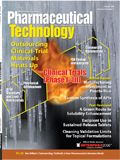Singapore Attracts Pharmaceutical Manufacturing Investment
Singapore moves forward with a plan to diversify its life science investment with projects in biologics and drug discovery.
Pharmaceutical and biopharmaceutical manufacturing and research and development represent an important part of Singapore's economic base. Several major projects were announced in 2007 as Singapore, along with Ireland and Puerto Rico, compete for investment in the life sciences.
Pharmaceutical manufacturing output
The biomedical sciences (BMS) sector in Singapore is a growing part of the country's economy and is the target of government initiatives to attract investment. "Today, Singapore's BMS industry contributes to slightly over 6% of Singapore's gross domestic product," says Keat-Chuan Yeoh, executive director of the Biomedical Science Board at the Singapore Economic Development Board (EDB), the government agency charged with business development. "In 2006, the BMS industry did extremely well. The manufacturing output grew strongly to S$23 billion (US $16 billion), an unprecedented 30% increase over 2005. The manufacturing output has grown almost fourfold from the year 2000, when we launched the BMS initiative."
In breaking down the BMS sector in 2006, of the total S$23 billion (US $16 billion) in manufacturing output, nearly S$21 billion (US$14.6 billion) was for pharmaceuticals and the balance was for medical technology. Manufacturing data for 2007 is scheduled for release in early 2008.
The BMS initiative was launched in 2000 to establish this sector as the fourth part of Singapore's industry cluster, alongside electronics, chemicals, and engineering, explains Yeoh. "This development was a natural extension of Singapore's capabilities in chemicals and electronics manufacturing," he says.
Key projects in 2007
In 2007, several major projects were announced according to the Singapore EDB in pharmaceutical manufacturing and R&D. These included:
- A US$700-million cell-culture facility to be built by Novartis (Basel, Switzerland) that will support clinical and commercial production of new biopharmaceuticals, primarily monoclonal antibodies, scheduled for operation in 2012
- Lonza's (Basel, Switzerland) breaking ground for its second commercial-scale mammalian cell-culture manufacturing plant in Singapore, representing an investment of US$350-million depending upon uptake.
- Merck & Co.'s (Whitehouse Station, NJ) opening of its regional headquarters in Singapore
- Genentech's (South San Francisco, CA) decision to set up Singapore's first microbial-based biopharmaceutical manufacturing facility, representing an investment of approximately US$140 million
- Eli Lilly's (Indianapolis, IN) US$150-million expansion in drug-discovery for the new Lilly-Singapore Center for Drug Discovery
- GlaxoSmithKline's (London) investment of S$20 million (US$14 million) in its Center for Research in Cognitive and Neurodegenerative Disorders for the construction of two medicinal chemistry laboratories
- Eisai's regional clinical coordination and management center in Singapore.
Key projects in 2006
These investments follow several major projects in 2006 as identified by the Singapore EDB. These projects include:
- GlaxoSmithKline's S$300-million (US$210-million) vaccine manufacturing plant in Singapore, which is scheduled to be operational in 2010
- Merck & Co.'s S$100-million (US$ 70 million) expansion of formulation-manufacturing facilities and supporting infrastructure
- Lonza's breaking ground for its first large-scale mammalian cell-culture manufacturing plant representing a US$250-million investment
- Novartis's creation of a new malaria research program in partnership with Wellcome Trust, Medicines for Malaria Venture, and the Singapore EBD
- Abbott Laboratories' (Abbott Park, IL) US$280-million nutritional powder manufacturing plant
- Covance's (Princeton, NJ) opening of an expanded central laboratory to support biopharmaceutical clients in global clinical trials
- SGS's (Geneva, Switzerland) opening of its new laboratory for quality control testing in analytical chemistry, microbiological testing, method development and validation, and stability testing
- The biopharmaceutical company PT Kalbe Farma's (Banten, Indonesia) opening offices for research and coordination licensing in Singapore.
Biotechnology investment in Singapore
As the pharmaceutical industry shifts its emphasis to biologics, Singapore is also keeping pace to build its biopharmaceutical base. "Having established a reputation as one of the world's most competitive and trusted sites for producing small-molecule-based active pharmaceutical ingredients and final dosage forms, Singapore is now aggressively pursuing biologics manufacturing investments, especially since biologics is anticipated to be a key growth driver for the global industry," say Yeoh. "We are quickly building up a critical mass of biologics manufacturing investments and expect to maintain this momentum as we attract more companies to set up such manufacturing facilities there." He points to five major biologics manufacturing investments (Lonza, GSK Biologicals, Genentech, and Novartis) that total more than US$1.5 billion.
Yeoh points out the first phase of Singapore's BMS initiative, which was from 2000-2005, focused on putting key building blocks by establishing core capabilities in biomedical research and introducing human and industrial capital. "For the next phase (2006-2010), we are building on this foundation and strengthening our capabilities in translational and clinical research to bring discoveries from the bench to the bedside and the marketplace and ultimately improve human healthcare," says Yeoh. That effort involves further expansion of its industry R&D base and an increase in the number of companies undertaking the discovery and development of new drugs and medical devices in Singapore.
For more on this topic, see:
Manufacturing Investment in Puerto Rico
Pharmaceutical and Biopharmaceutical Manufacturing Advances in Ireland

Drug Solutions Podcast: A Closer Look at mRNA in Oncology and Vaccines
April 30th 2024In this episode fo the Drug Solutions Podcast, etherna’s vice-president of Technology and Innovation, Stefaan De Koker, discusses the merits and challenges of using mRNA as the foundation for therapeutics in oncology as well as for vaccines.